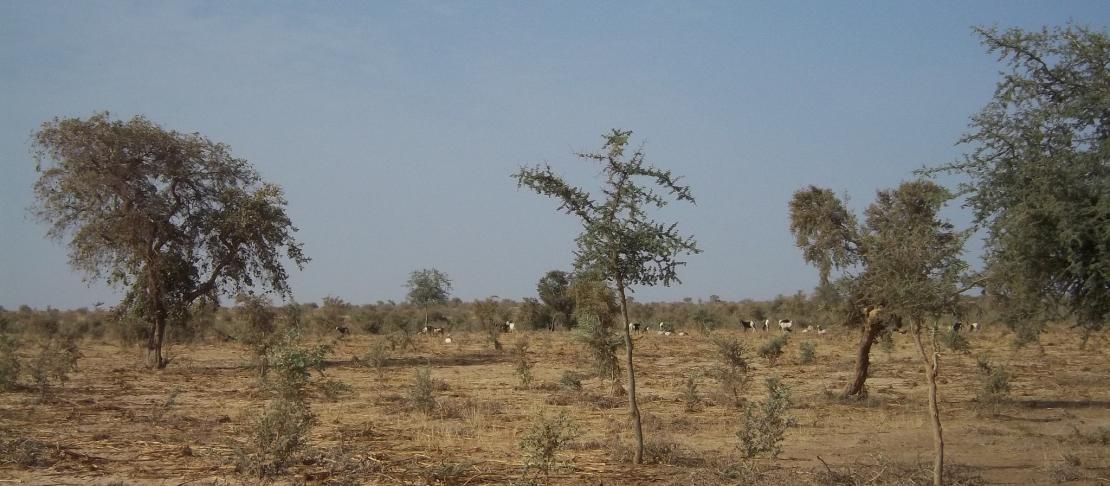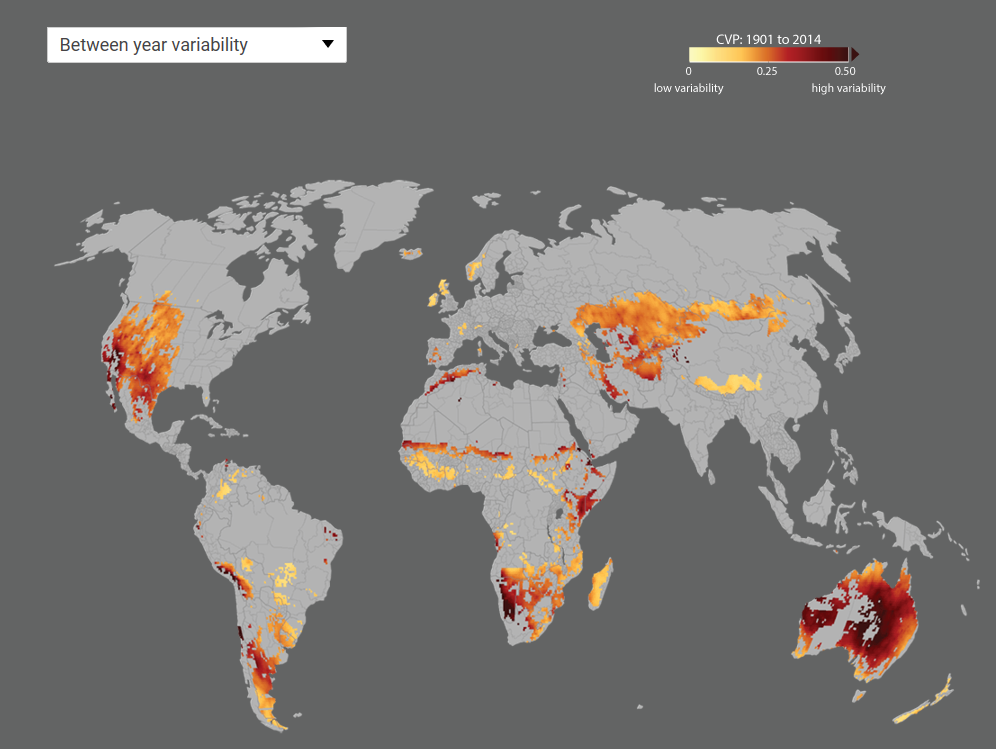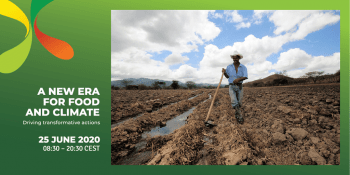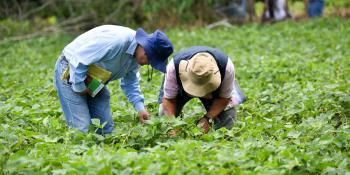Climate change is affecting grazing lands

More variable rainfall and other changes in climate are negatively impacting many millions of livestock keepers around the world. What can be done about it?
Looking at the photo above, many people might wonder whether such a landscape could support human activity. But look closely, and you’ll see those brown and white shapes in the background are not wild animals—they’re goats, and they belong to people who count them as one of their major assets contributing to their livelihood and food security.
More of the Earth’s land area is used for livestock grazing than for any other human activity. Such grazing land is often marginal, like the land shown above. It is not suitable for growing crops or building cities, but it still serves a vital purpose. Worldwide, about 800 million people depend on livestock that graze on natural vegetation for their food and economic security.
A new report published by the Institute on the Environment at the University of Minnesota sheds light on how climate change is affecting grazing lands and the people and livestock that rely on them. For example, rainfall patterns have become more variable in half of the world’s open grazing lands, making it riskier to intensify production.

The between-year coefficient of variation of precipitation (CVP) is high in many of the world’s important grazing lands. Source: Sloat, L. et al. Increasing importance of precipitation variability on global livestock grazing lands. Nature Climate Change (2017)
But there is hope: changing to hardier breeds and sowing seeds for better fodder are some of the options available that can help the world’s livestock keepers. Dr. Philip Thornton, CCAFS Flagship Leader for Priorities and Policies for Climate-Smart Agriculture and contributor to the report notes:
In some situations, livestock graziers’ reliance on moving their animals to deal with seasonal forage shortages or other drought or flood events may be difficult to sustain, for several reasons. But there are options, including adaptive management, breed and species switching, pasture management, and use of seasonal forecasts and index-based insurance, for example. The private sector and appropriate government policy can play a big role in making these options attractive and feasible.”
Interested in policies and priorities for climate-smart food systems? Subscribe to our newsletter to receive quarterly updates on our CCAFS work and occasional announcements.
Read more:
- Check out the full report, Is Climate Change a Risk to Global Grazing Lands?, for more maps of where livestock keeping is most economically important, how rainfall variability has changed, and more. You might also be interested in the other reports in the Food Matters series of the institute’s Environment Reports: Can We Eat Less Water?, Waste Not, Want Not?, and Change Your Diet, Change Our Destiny?, among others.
- Related journal article: Sloat LL, Gerber JS, Sambger LH, Smith WK, Herrero M, Ferreira LG, Godde CM, West PC. 2018. Increasing importance of precipitation variability on global livestock grazing lands. Nature Climate Change (restricted access). The article can also be read online here but cannot be downloaded.
Laura Cramer is a Science Officer with the CCAFS Flagship on Policies and Priorities for Climate-Smart Agriculture.



